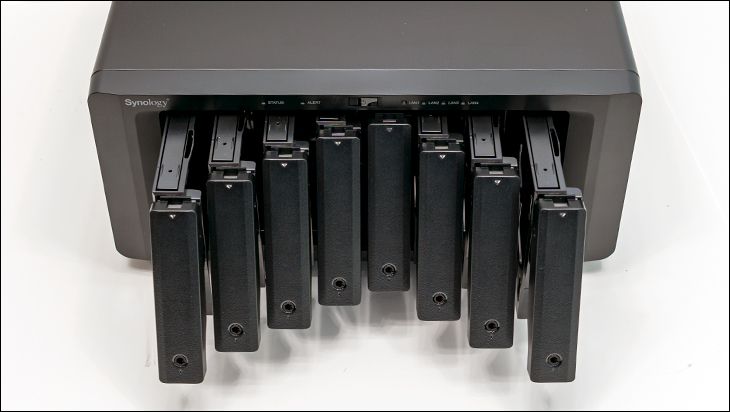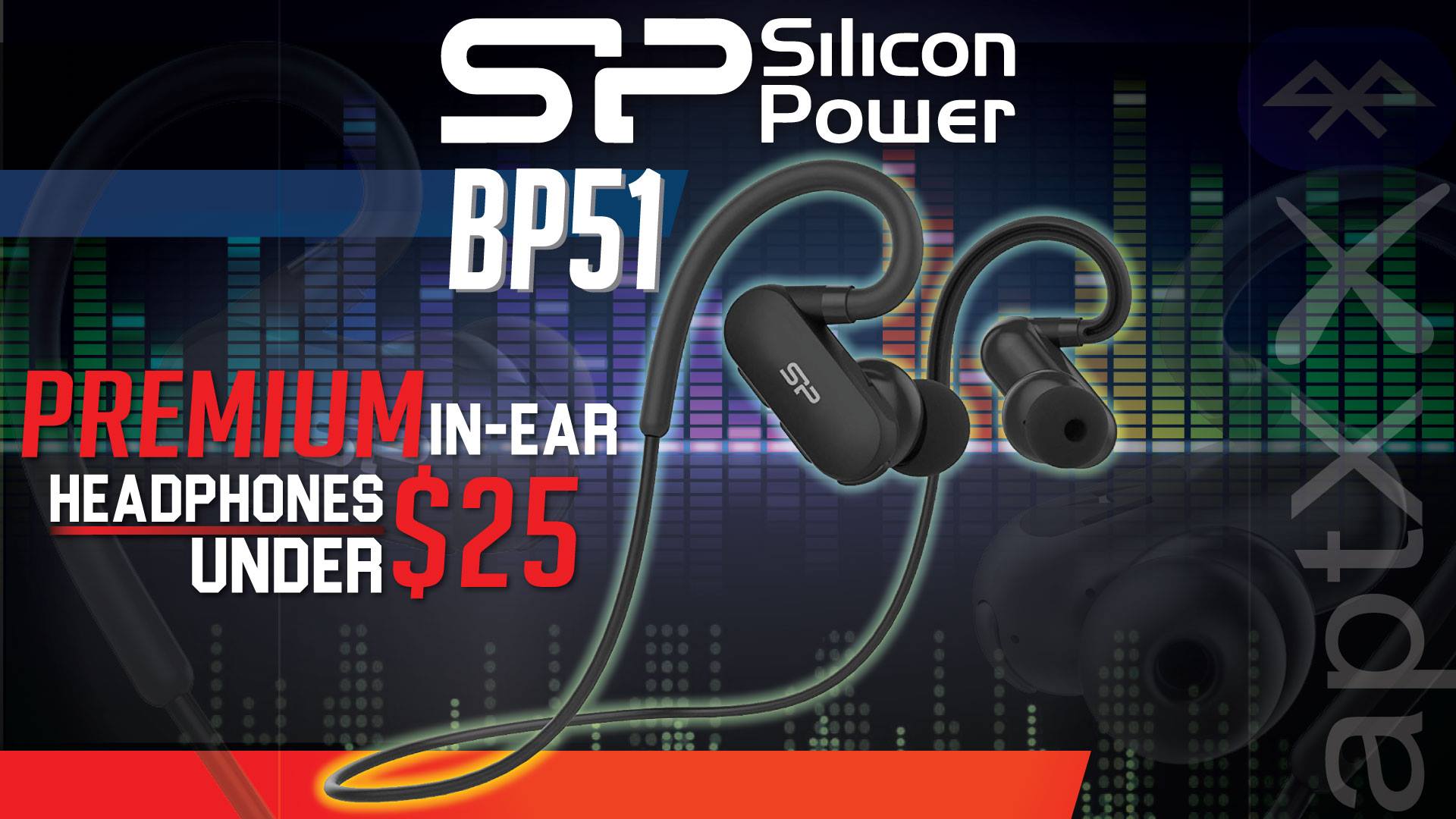Of the three main upgrade options… NIC options are going to be the most controversial. Thankfully, for the next couple years, it will be the least likely component to be upgraded. For many, arguably most, DS1821+ users the four 1Gbe ports integrated into the unit will be more than enough. Barring a massive reduction in network infrastructure costs upgrading to 2.5Gbe is contra-indicated for most on a price vs. performance basis. Instead, most who upgrade their network infrastructure are going to skip past 2.5 and even 5Gbe options and go for the tried-and-true 10GbE options (but probably will not go the 40Gbe route… yet).
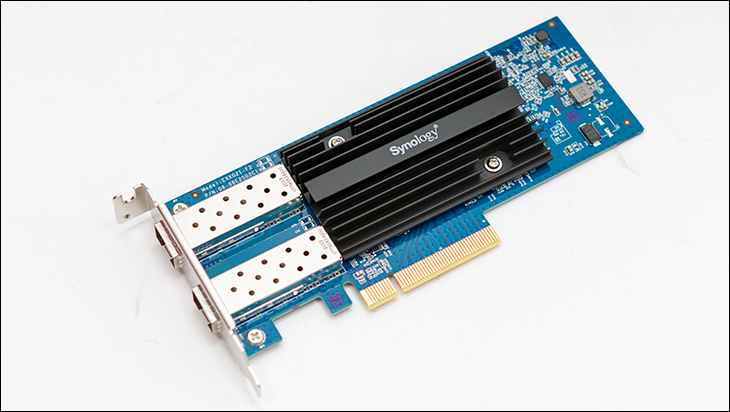
For those who want absolutely, guaranteed combability… go to Synology’s website and look at the latest QVL list for the DS1821+. The E10G21-F2 is indeed on there. This is a Marvell (aka Cavium aka QLogic) FastLinQ 41000 Series based controller with dual SFP+ ports. To be precise it is a QL41102-A2G controller based Networking Add In Card… and is the same as what HP use/used in their “Gen10 Plus Ethernet Adapter” series. It just works. Good performance plus no hassles is indeed a good combination.
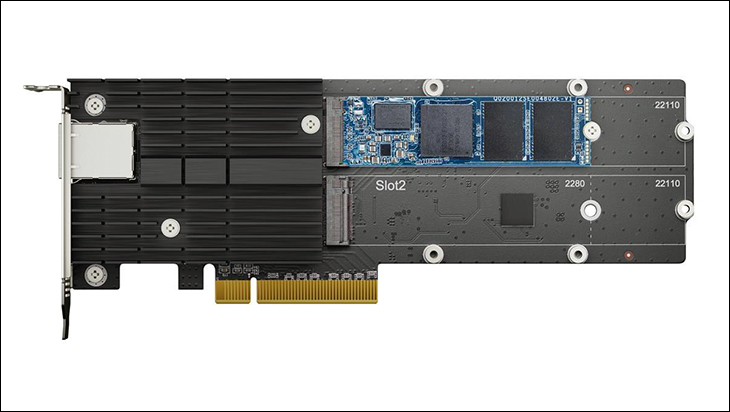
Where the DS1621Plus only comes with one PCIe slot, some may be tempted to go the combo dual M.2+10GbE NIC route. Of these we prefer the Synology E10M20-T1. We don’t prefer it just because it will give you two M.2 NVMe ports along with 10Gbe abilities, instead it is because of the increased cooling associated with having to keep both a moderately hot running 10GbE controller and a pair of modern NVMe SSDs cool. Keeping both cool while also being passively cooled (due to space limitations / concerns) is tough. This is why the brute force approach of increasing the heat sink dimensions is optimal. Bigger sink with bigger surface area means better temperatures. The E10M20-T1 comes with two (relatively) massive heatsinks (one dedicated for the M.2 110 slots, one for the 10GbE controller).

Thus, the Aquantia AQC107 based Synology E10M20-T1 is an excellent choice from a cooling perspective. It however is not on the QVL for this specific NAS. Also in the negative column is the reliance on the AQC107 is less than optimal. Aquantia controllers have a bit of a reputation of being divas who do not play nice with every 10GbE hardware out there. Put bluntly, they have been accused of causing random issues (especially with Ubiquiti hardware). Networking issues which ‘suddenly’ disappear when the Aquantia hardware is pulled and replaced with Intel or Chelsio or Mellanox. In this regards… they have gotten better (as they are now owned by Marvell). Arguably ‘good enough’ to not be a deal-breaker for most home users. Sadly, on top of this issues is the fact that the Synology E10M20-T1 is (obviously) a single 10GBase-T enabled device. For our peace of mind, and conservative nature, we typically opt for dual port models… as ports do go bad. Thus, the Synology E10M20-T1 may not be an optimal choice for all users and scenarios. Only you can decide if these issues are important to you or not.
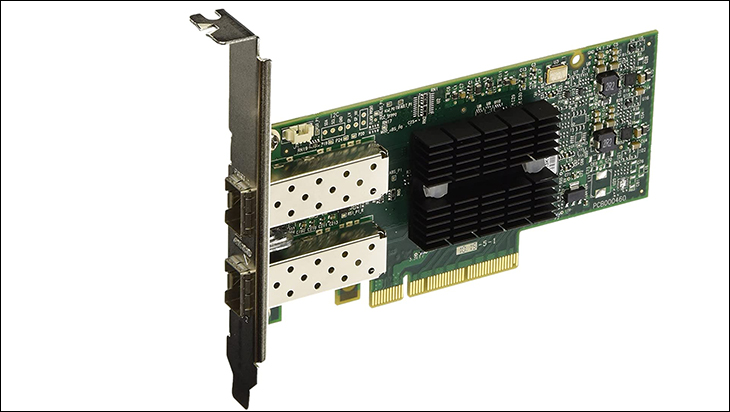
Setting aside the whole the NIC vs. NIC+M.2 question on what to populate the single PCIe slot with, we feel that those interested in the 10GbE, or faster, route should first answer one simple question: is the ‘safe’ option of picking from the QVL list the best option? Our personal ‘go to’ 10GbE (or faster) NICs of choice are the Intel X540, Intel X550, and Mellanox connectX-3/3 pro controllers (and Chelsio if dealing with TrueNas based systems). None of which are on the QVL. Ironically the Intel X710 (one of our least favorite high’ish speed NiCs going) is on the QVL. For 10GbE, we typical recommend SFP+ over 10GBase-T as they run cooler and consume less power. For switch-to-switch interconnection (6-12inch “patch cables”) we prefer DAC, but prefer active optical cable (aka AOC) over twinax copper (aka DAC or ACC if active) for connections from the device to the switch – higher power, latency and cost or not as they typically ‘just work’ where twinax can be finicky (especially when dealing with various NICs, various brand switches, various DAC/ACC cable manufactures, and varying run lengths). Either way, Intel 540 NICs and Mellanox X-3’s are cheap these days (used they are almost free), Mellanox X-3 pro and X-4s (both with 25/40/50 or faster futureproofing abilities baked in) are rather reasonable, and newer Intel controllers are not what we call expensive. These options ‘just work’ in Synology (and Qnap for that matter) NAS appliances… not matter what the QVL says.

Just be careful with Intel fakes as there are a ton of them out there and it is easy to get caught by scammers… so non-Intel based options may prove to be safer (and cheaper) if you do not have a working relationship with a hardware supplier. As with every other upgrade decision, the final decision must be yours. Think about what you want/need/desire, what your budget is, and what your comfort level with non-QVL’ed models are. Then purchase… and enjoy the much better networking performance 10GbE (or faster) brings to the table.
